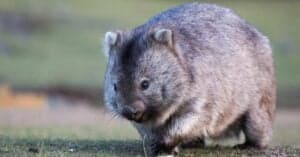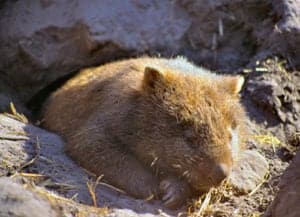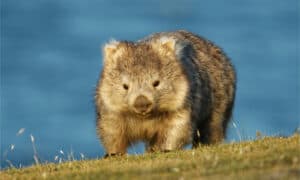Wombats are unique oddballs of the animal kingdom with their mighty back ends, cube-shaped poop, and adorable little waddle! Native to Australia, these funny creatures look almost like dog-sized bears, or, as one researcher put it, “very fat badgers.” Cute and pudgy, wombats — especially baby wombats — are irresistibly charming. Let’s dive in and take a closer look at some precious pictures and incredible facts about baby wombats!
1. There Are Three Different Species of Baby Wombats
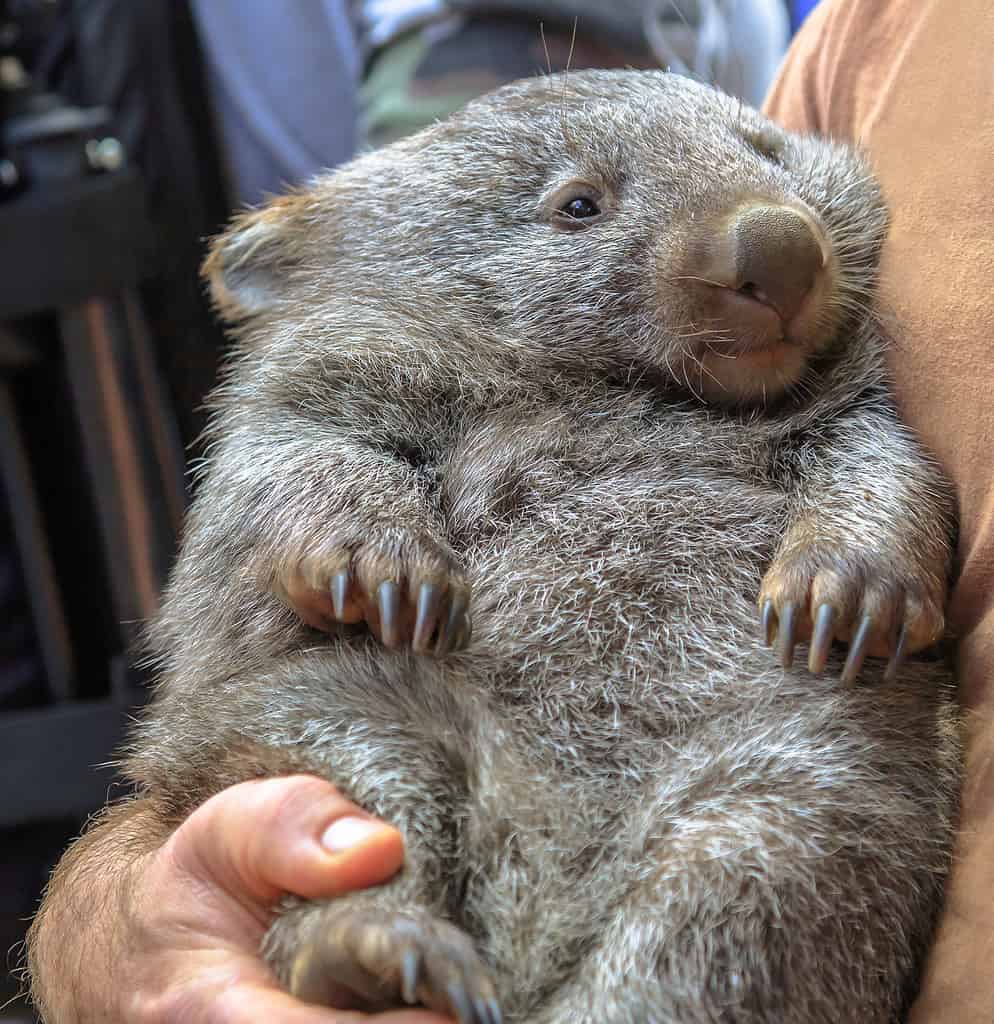
Wombats are herbivores and can graze for up to eight hours each night.
©bennymarty/iStock via Getty Images
Wombats are endemic to Australia, which is the only place in the world where they live in the wild! Within the continent, however, there are three different species. The common wombat (Vombatus ursinus) lives along southern and eastern Australia and prefers cooler areas with lots of water.
The southern hairy-nosed wombat (Lasiorhinus latifrons) is the smallest of the three species and lives in small woodlands and grassland areas in southern South Australia, Western Australia, and southwestern New South Wales. The northern hairy-nosed wombat (Lasiorhinus krefftii), on the other hand, is the largest of the three species. It is also extremely rare and only lives in the Epping National Forest in east-central Queensland.
2. At Least One Type of Baby Wombat Is Critically Endangered
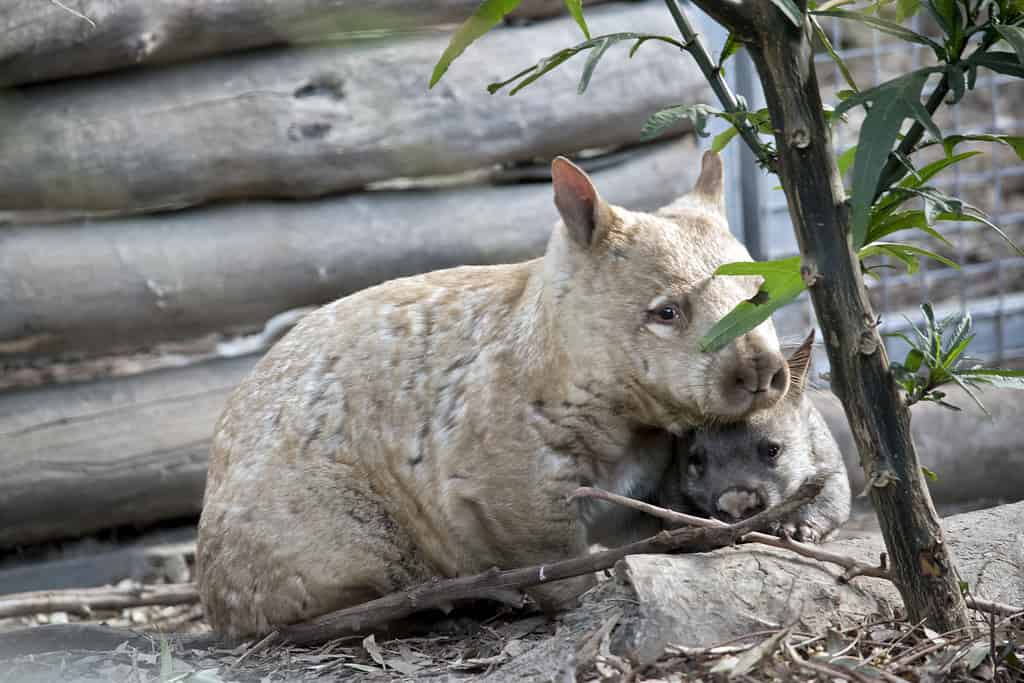
Both the southern hairy-nosed wombat and the northern hairy-nosed wombat are threatened.
©ozflash/iStock via Getty Images
Unfortunately, the northern hairy-nosed wombat (or yaminon) is critically endangered. In fact, the northern hairy-nosed wombat is one of the rarest land mammals on earth today! Northern hairy-nosed wombats once lived throughout Queensland, Victoria, and New South Wales, but today they are restricted to a very small range within Epping National Forest. The primary threats to these cute animals stem from their small population size, which makes them much more susceptible to disease and other threats. In addition, they suffer from habitat loss and have many predators, like wild dogs and dingos. Northern hairy-nosed wombats must also continually compete for food as their natural resources dwindle.
Although they are still in critical danger, fortunately, conservation efforts within Epping Forest National Park are underway to help protect the northern hairy-nosed wombat. In 2003 there were only an estimated 113 of these animals left in the wild, but by May 2021, researchers recorded over 300. They still have a long way to go, but they are making a slow comeback.
3. Baby Wombats Are Called Joeys
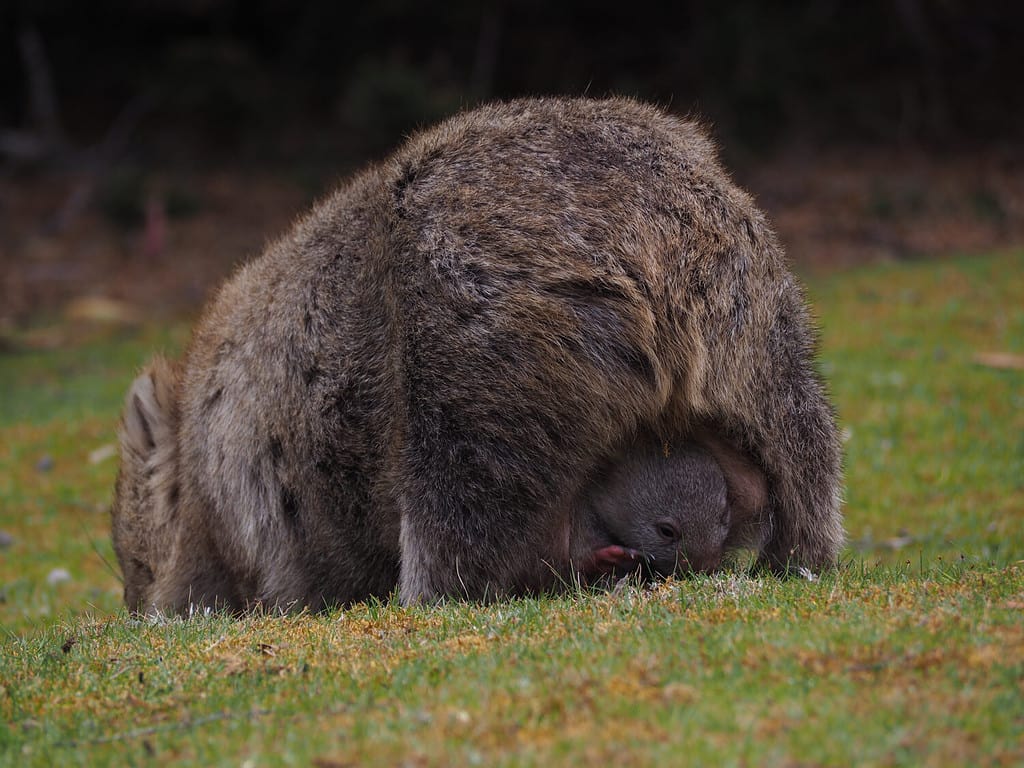
Marsupials have a very short gestation period. Babies finish developing inside the mother’s pouch.
©tinokoloski/Shutterstock.com
Native to Australia, wombats are marsupials. This means that female wombats have pouches like kangaroos and koalas, and baby wombats are called “joeys”. Like other marsupials, wombats give birth to small, premature babies that develop in the special pouch on their mother’s tummy. This pouch, called a marsupium, serves as a portable nursery as the baby joeys grow and develop. However, unlike other marsupials, wombat pouches open towards their rear ends! Wombats are skilled diggers, so this unique design prevents dirt from getting inside the pouch, keeping the precious little baby wombat clean.
4. Baby Wombats Spend the First Six Months in Their Mother’s Pouch

Wildlife rescuers create makeshift pouches for orphaned baby wombats.
©Ken Griffiths/iStock via Getty Images
After a baby wombat is born, it immediately crawls into its mother’s pouch and doesn’t leave for at least six months! Nestled away in this cozy pouch, the baby continues to grow and develop, safely protected from the outside world. After six months or so, wombat babies begin to peek their heads out of the pouch but will remain inside for another three to four months. Even when they begin to venture beyond the safety of their mother’s pouch, baby joeys don’t go too far. In fact, baby wombats stick close to their mothers until they are at least a year old!
5. Baby Wombats Are Super Tiny When They Are Born

Newborn baby wombats crawl straight from the birth canal into their mother’s pouch.
©slovegrove/iStock via Getty Images
As adults, wombats are about the size of a medium-sized dog, albeit heavier, shorter, and more compact. However, when they are born, wombat joeys are shockingly small. In fact, newborn wombats are only about half an inch long and weigh 0.014 ounces — that’s about the size of a jellybean! Newborn wombats come into the world early and undeveloped compared to other mammals. They don’t have any hair and look a bit like tiny worms.
After they are born, the newborn joeys crawl straight into their mother’s pouch and attach to one of her teats. Here, the tiny baby will continue to grow and develop for the next several months without ever leaving the safety of the pouch.
6. Baby Wombats Stay with Their Mothers for Up to Three Years
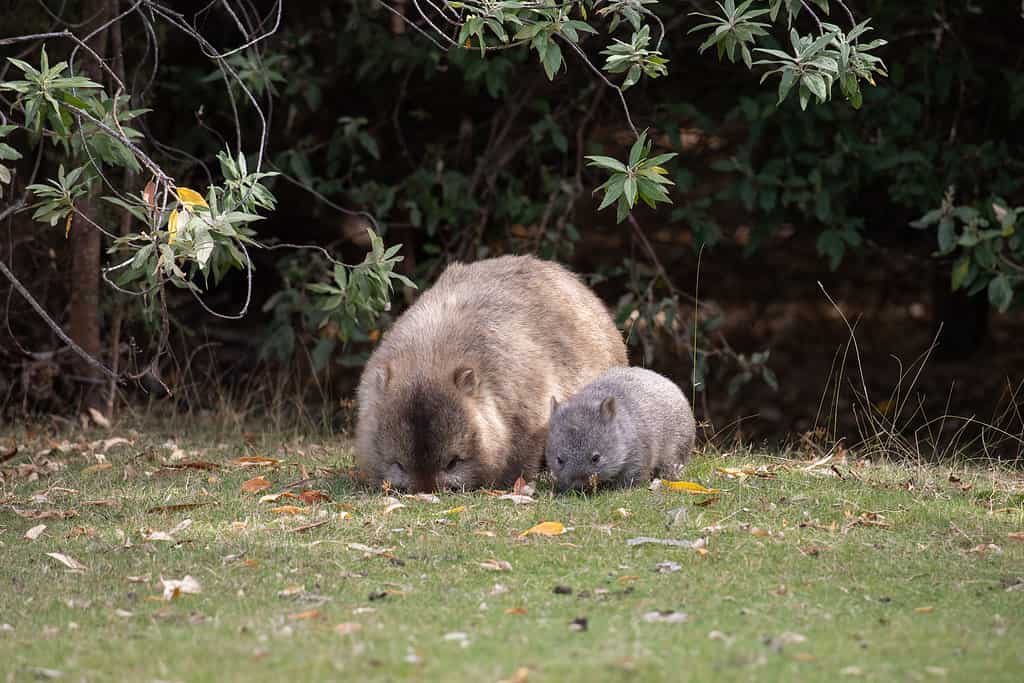
Baby wombats are never too far from their mothers.
©Tom Wayman – TD Events/iStock via Getty Images
Even after their bodies have developed, young baby wombats continue to stay with their mothers for a long time. After several months, they may leave their mother’s pouch on occasion for small excursions, but they never stay away for too long. When outside of the pouch, the babies follow their mother, imitating them and taste-testing the various solid foods that she eats. However, babies continue to nurse until they are around 12 to 15 months old, and even after weaning, they stay with their mothers for at least two years. Baby southern hairy-nosed wombats often stick around until they are at least three years old!
7. Baby Wombats Spend a Lot of Time Underground
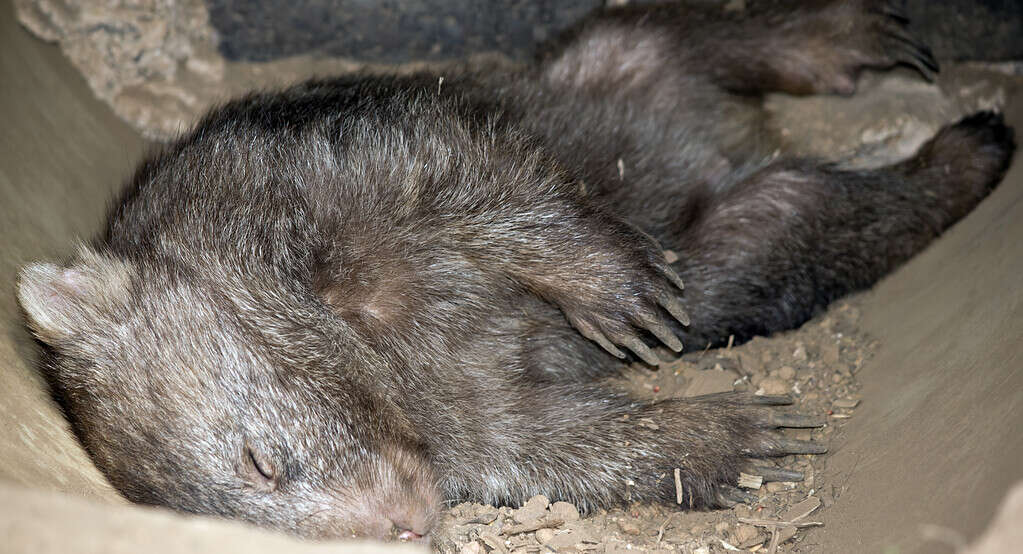
Wombats have long, powerful claws to help them dig impressive burrows.
©ozflash/iStock via Getty Images
Wombats possess exceptional digging and burrowing abilities. Their powerful claws are perfectly designed to excavate the earth as they tirelessly dig their large burrows. A single wombat can create an entire network of interconnected tunnels and chambers! Baby wombats and their mothers may rest for several days at a time in these complex, underground labyrinths.
8. Baby Wombats Learn Self-Defense at an Early Age
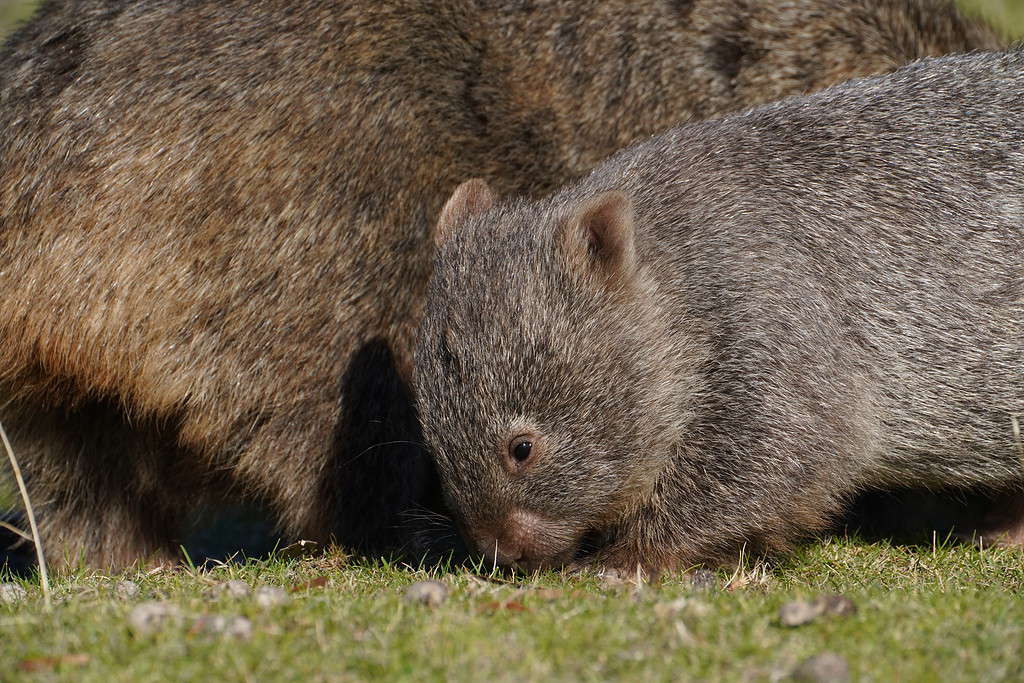
Many different types of animals often utilize wombat burrows and their underground complexes.
©LKR Photography/iStock via Getty Images
Mothers teach baby wombats how to utilize their unique defenses early on in life. For example, when they feel threatened, wombats retreat to their underground burrows, skillfully blocking the entrance with their remarkable hindquarters. Wombats have unusually tough rear ends, which serve as surprisingly effective barricades from potential predators. However, if their blockading behinds don’t deter a predator, wombats will release a forceful kick with their strong back legs. A powerful blow to their attackers, a hefty wombat round kick can cause a lot of damage!
9. Baby Wombats Can Glow in the Dark
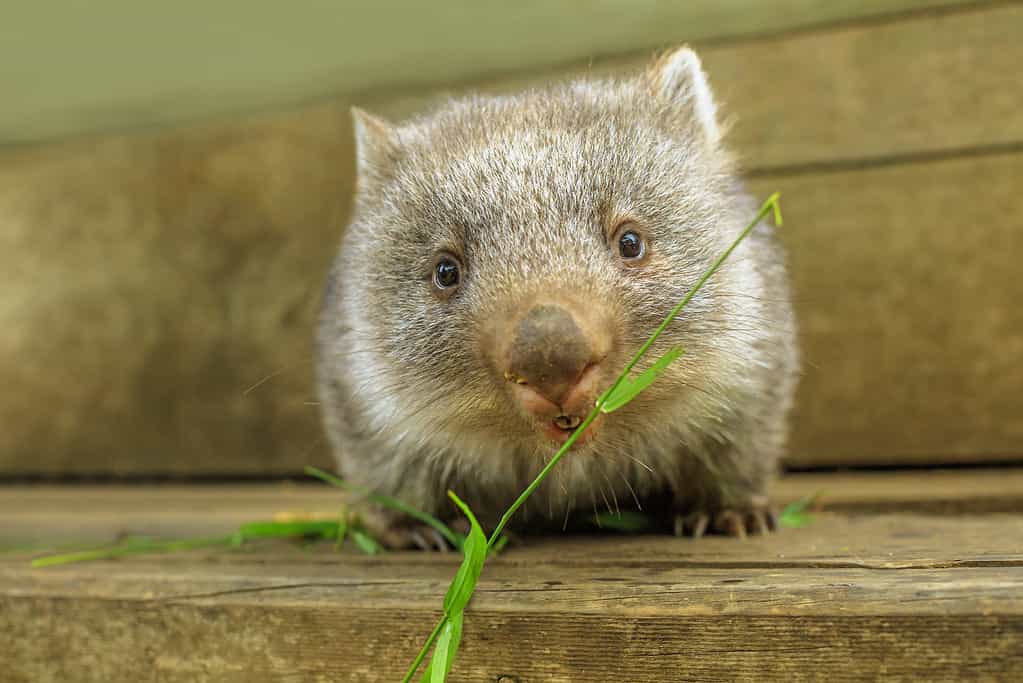
Baby wombats nurse for 12 to 15 months.
©bennymarty/iStock via Getty Images
Like many of the unique marsupials of Australia, wombats have a unique biofluorescent quality to their fur. In other words, when placed under a black light, wombats will glow! This biofluorescence is due to certain chemicals, like proteins or carotenoids on the surface of their bodies, that absorb the light and reemit it in longer wavelengths. Scientists aren’t really sure why wombats have this biofluorescent fur, but they do have a few theories. It could be that their biofluorescence helps them to blend in with their surroundings and make them harder to spot. Another theory is that their glowing green fur helps wombats to communicate with each other in the dark.
10. Baby Wombats Are Social Butterflies
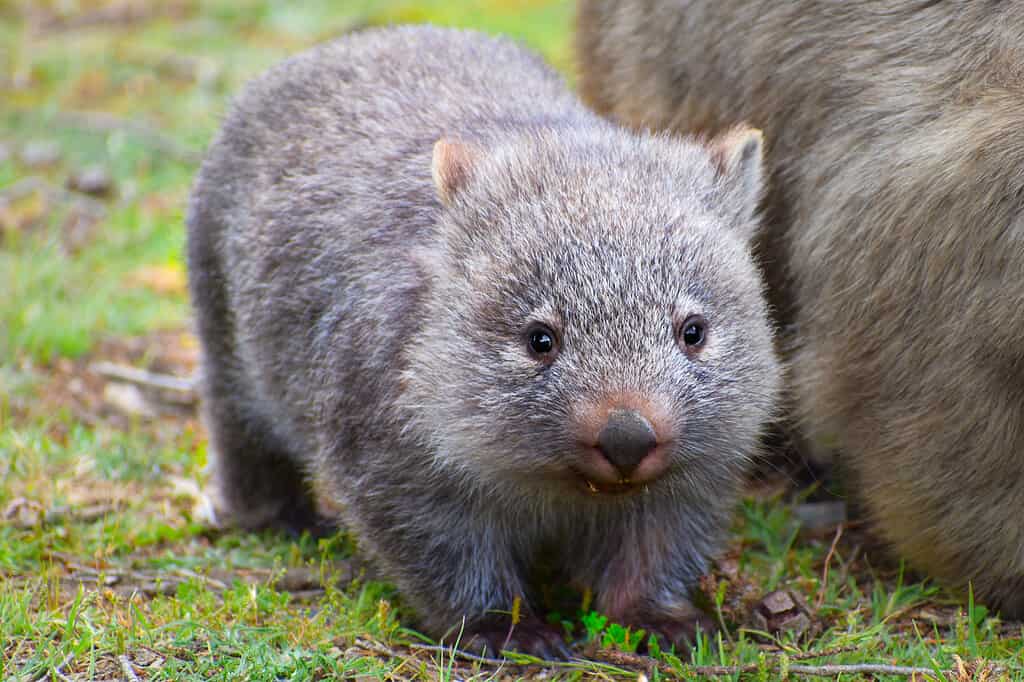
Baby wombats learn from playing and interacting with their mothers and other young joeys.
©Tiffany-Jane Pe Than/iStock via Getty Images
Wombats exhibit a fascinating range of social behaviors, depending on the species. Common wombats, for example, have an independent nature and prefer a solitary lifestyle. On the other hand, northern and southern hairy-nosed wombats are much more inclined towards social living. These gregarious hairy-nosed wombats often form large burrow groups, housing anywhere from 10 to 15 individuals.
When a group of wombats come together, they are referred to as a wisdom, a mob, or a colony. Wombats interact with one another in their community groups, baby wombats in particular love to play. Playing and play-fighting with other young wombats helps them to expend extra energy, develop social and creative skills, and practice defensive maneuvers.
The photo featured at the top of this post is © bennymarty/iStock via Getty Images
Thank you for reading! Have some feedback for us? Contact the AZ Animals editorial team.



